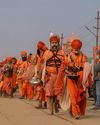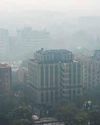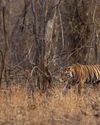Dengue fever is a mosquito-borne tropical disease caused by the dengue virus. It is spread by several species of mosquitoes of the Aedes type, principally A. aegypti. The last few years have seen particularly severe dengue epidemics in the metropolitan cities of India with several deaths due to the different strains of dengue. Here, Dr Rina Mukherji discusses the spread and factors responsible for the rising cases of dengue in India. She highlights that climate change in the form of vagaries in weather patterns (particularly monsoon) have a definite role in the increasing prevalence of dengue as conditions become ideal for the breeding of disease vectors during the post-monsoon period resulting in epidemics in urban and peri-urban areas.

Of all known health risks, dengue has emerged as a major public health problem in recent years. Frequent outbreaks encompassing the length and breadth of the country are now a major headache for civic authorities. The last few years have seen particularly severe epidemics in Indian metropolitan cities, such as Delhi, Kolkata and Mumbai, with several deaths due to the different strains of dengue. Although the disease has actually been triggered off in urban centres, it has gradually spread to peri-urban and rural outposts owing to a number of man-made factors.
The Dengue Mosquito, Aedes aegypti
The dengue mosquito, Aedes aegypti, thrives in clean, stagnant waters at temperatures in the range of 20–30 °C. Research indicates that the daily mean temperature and the variation in temperature are two of the most important drivers of the distribution and incidence of the disease. Studies show that as precipitation patterns change and temperatures rise, opportunities keep increasing for the further geographical expansion of the Aedes vectors and of dengue. The worst months for dengue, going by the trends observed over the past few years, are the postmonsoon months of September and October, when temperatures rise, and stagnant conditions prevail. Unlike in July–August, when heavy rains generally disturb the breeding sites and cause mosquito larvae to get washed away, the post-monsoon months have ample water, high temperatures, and humidity, and a comparatively stagnant environment for mosquito larvae to thrive. Vector survival, as experts point out, decreases rapidly as dryness increases.
Types of Dengue
Dengue may be one of the three main types:
Dengue fever (DF): This is the common type of dengue-related fever that affects adults and children alike
This story is from the April 2018 edition of TerraGreen.
Start your 7-day Magzter GOLD free trial to access thousands of curated premium stories, and 9,000+ magazines and newspapers.
Already a subscriber ? Sign In
This story is from the April 2018 edition of TerraGreen.
Start your 7-day Magzter GOLD free trial to access thousands of curated premium stories, and 9,000+ magazines and newspapers.
Already a subscriber? Sign In

National River Confluence
Collective Voice Raised for Rivers at National Level

Mahakumbh Mela
Where Ancient Traditions Meet Astronomical Wonders

Mahakumbh 2025
Sets High Green Standards for Future Generations

Karanja Port
Meeting Challenges of Migrant Needs and Global Competition

Aquifer Thermal Energy Storage
A Solution to the Heating and Cooling Needs of India?

Assessing the Impact on Human Health of Net Zero Pathways
A Summary of Ongoing Research and Methodologies

Taking Education to the Next Level
GD Goenka Public School Sets New Benchmark for Indoor Air Quality

Tigers in the Neighbourhood
How India Makes Room for Both Tigers and People

Eco-Friendly Wastewater Treatment with Advanced Hybrid System
Innovative Process by NIT Rourkela Researchers

IBM's State of Sustainability Readiness Report 2024 Shows India is a Leader in Al-Driven Sustainability Initiatives
Business leaders in India see the benefits of investing in IT for sustainability, with 98 per cent planning to increase investments in IT for sustainability over the next 12 months. Around 96 per cent of Indian executives surveyed believe AI will positively influence sustainability goals.
